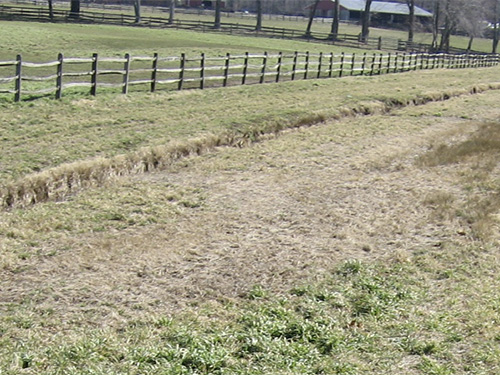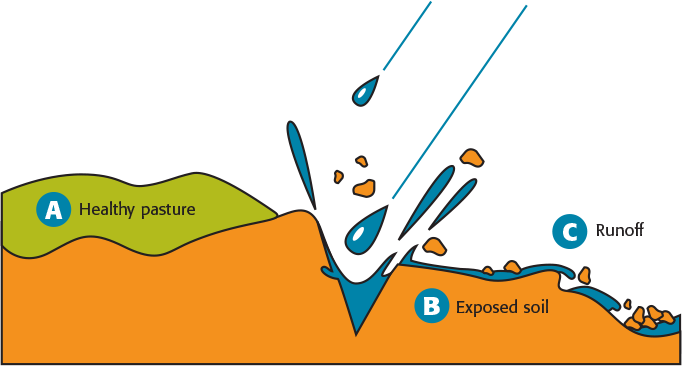
Heavy rain events as well as activities such as cultivation can cause erosion. Water erosion is the natural process of soil movement from higher areas to lower areas by the action of precipitation or flowing water. Factors affecting soil erosion include soil type, slope, intensity and duration of precipitation, soil cover, and management practices. When grass or pasture is not maintained, bare areas of soil can develop. Nutrients and bacteria attached to eroded soil particles can add to the pollution of surface waters. Soil can be washed from crop felds and pastures that are not protected with erosion control practices. Buffers surrounding pastures can capture nutrients and bacteria and prevent their loss into surface waters.
To reduce stream bank soil erosion from animal traffic, tanks containing drinking water should be located in areas where the ground is stable and grass will filter runoff from the drinking area, before it enters nearby streams or ponds. If animals must be given access to streams or ponds to obtain water, access should be limited to areas where the banks have been lined with stone and reinforced.
One of the most important things you can do to help maintain water quality is to develop a conservation plan. Your conservation plan can be developed with the assistance of your local Soil Conservation District and the Natural Resources Conservation Service (NRCS). The plan will address various issues, including soil erosion, to maintain pasture productivity and proftability while protecting the environment.
It is the policy of the State to provide a comprehensive and coordinated erosion and sediment control program to reduce the impacts from storm water runof, to reduce non-point pollution from sediment and to conserve and protect the land, water, air, and other environmental resources of the State.
Soil erosion from pastures is sometimes difficult to see. It often occurs in areas where livestock are concentrated, such as water resources, livestock travel lanes, and loafing areas. Erosion also can occur at low stocking densities on degraded lands due to poor soil fertility or drought.
A well-managed pasture with good cover will ensure that runoff spreads rather than concentrates and causes erosion. Roads, fences, and other structures can cause concentration of runoff. Careful planning is required to ensure that property improvements are located where they will not contribute to erosion.
Raindrop Impact Erosion




